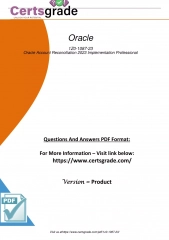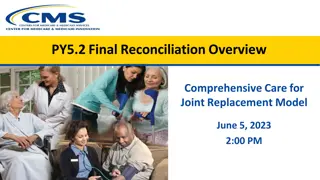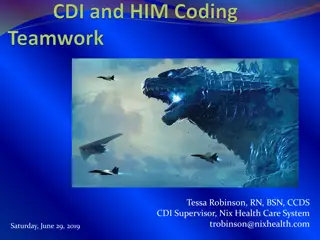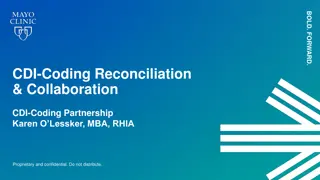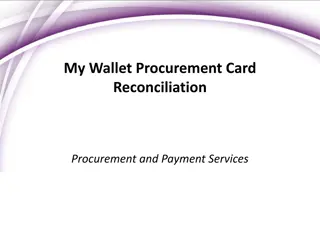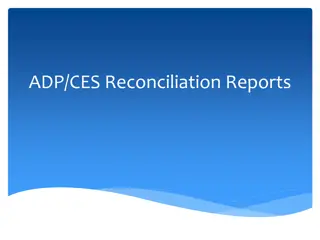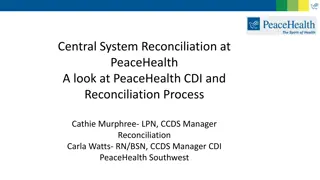PY6 Reconciliation Overview
The PY6 Reconciliation Overview provides detailed information on the comprehensive care for joint replacement model, including announcements, updates, payment and repayment details, reconciliation review, data reports, appeals process, and CJR regulations. Important details such as payment timing, reconciliation methodology changes, and regulations governing reconciliation amounts are discussed. For accurate processing, providers must ensure correct information in the Medicare Provider Enrollment system.
Download Presentation

Please find below an Image/Link to download the presentation.
The content on the website is provided AS IS for your information and personal use only. It may not be sold, licensed, or shared on other websites without obtaining consent from the author.If you encounter any issues during the download, it is possible that the publisher has removed the file from their server.
You are allowed to download the files provided on this website for personal or commercial use, subject to the condition that they are used lawfully. All files are the property of their respective owners.
The content on the website is provided AS IS for your information and personal use only. It may not be sold, licensed, or shared on other websites without obtaining consent from the author.
E N D
Presentation Transcript
PY6 Reconciliation Overview Comprehensive Care for Joint Replacement Model November 7, 2023
Agenda 1. Announcements 2. Payment and Repayment 3. Reconciliation Review and Updates 4. Data and Reports 5. Appeals Process 6. Reconciliation Review
Announcements PY6 Reconciliation Report available on the CJR Data Portal as of November 7, 2023 PY5.2 Final Reconciliation Report available separately Monthly data feed no longer includes Performance Year (PY) 6 episodes as a result of PY6 reconciliation Send questions regarding today s webinar materials to CJRSupport@cms.hhs.gov
Updates for PY6 Reconciliation PY6 reconciliation incorporates methodology changes for the three-year extension of the CJR model PY6 has one reconciliation, rather than an initial and final reconciliation For PY6-8, reconciliations will be referred to by PY, rather than calendar year in which reconciliation occurs Payments/repayments and appeals for PY6 reconciliation occur separately from PY5.2 final reconciliation
CJR Regulations Reconciliation amounts calculated according to methods described in 42 C.F.R. 510, 512 Published in the CJR Original Final Rule Revised in the EPM Final Rule enacting minor modifications, the CJR/EPM Voluntary Participation and other changes Final Rule, the April 2020 COVID-19 Interim Final Rule with Comment Period (IFC), the November 2020 COVID-19 IFC, and the May 2021 CJR Model Three-Year Extension, Episode Definition and Pricing Changes Final Rule Regulations and notices can also be found on https://innovation.cms.gov/initiatives/CJR
Payment and Repayment Payment and Repayment
Payment Timing Approximate timing of payment delivery February 2024 for those not appealing May 2024 for those appealing
Your Information Must be correct in Medicare Provider Enrollment, Chain, and Ownership System (PECOS) Banking details Contact person name and address Ensures payments are received and repayments don t accrue unnecessary interest
Payment An independent payment contractor, National Government Services (NGS), facilitates the reconciliation process Payments are made via USBank Not regular Medicare Administrative Contractor (MAC) The first addenda line on the EFT remit will show: *ZZ*CMMI IPC NGS *ZZ*USBANK One payment with separate addenda lines showing which Medicare Trust Funds were drawn from: CMS-CJR-A CMS-CJR-B Total payment will reflect the sum of the CMS-CJR-A (Part A) and CMS-CJR-B (Part B) lines
Repayment If you owe a repayment: You will receive a demand letter at your hospital s mailing address of record that will include information on how to submit payment If you wish to pay the amount due prior to receiving the demand letter repayment, instructions will be included in: The email notification of the availability of the reconciliation reports, and The reconciliation report itself
Payment Offset You may receive a payment less than the amount shown in your reconciliation report Due to an outstanding CJR model debt or unpaid interest from a previous PY, either from your CCN or another CCN that shares the same TIN Due to a current CJR model repayment owed by a CCN that shares the same TIN Outstanding amount is netted against the reconciliation payment For example: PY6 reconciliation payment amount PY5.2 final outstanding debt/interest EFT remit $30,000 -$5,000 $25,000
Reconciliation Review and Updates Reconciliation Review and Updates
Reconciliation Review and Updates 1. Reconciliation Parameters 2. Episode Definitions and Adjustments 3. Target Prices 4. Net Payment Reconciliation Amount Adjustments
PY6 Reconciliation Parameters PY6 Reconciliation Parameters
Update: Included Episodes and Target Prices Episodes that ended October 1, 2021 December 31, 2022 Episodes starting from 7/4/2021 10/3/2022 receive the same set of PY6 target prices A small number of episodes use target prices from Performance Year Subset 5.2 (episodes with start dates prior to July 4, 2021) Episodes are assigned to an episode period in the report (indicating applicable target prices and wage factors) based on episode start date
Update: Single Reconciliation For PY6-8, episodes only go through one reconciliation PY6 reconciliation uses claims processed into the CMS IDR as of July 1, 2023, six months after the close of the performance year This differs from PY1-5, which had both initial and final reconciliation for each performance year As a result, the reconciliation payment/ repayment in the report is final there will not be a second reconciliation next year
Episode Definitions and Adjustments Episode Definitions and Adjustments
Update: Inclusion of Outpatient Episodes Beginning with PY6, the CJR model includes outpatient lower extremity joint replacement (LEJR) procedures Outpatient anchor procedures are identified using HCPCS codes 27447 (TKA) or 27130 (THA) The 90-day post-discharge period for outpatient episodes includes the day of the anchor procedure Outpatient episodes are assigned to the same prospective target prices as inpatient episodes with similar characteristics
Update: Inclusion of Outpatient Episodes Outpatient episodes and inpatient episodes are assigned to an episode type based on anchor DRG/HCPCS code and fracture status Some episode types include both inpatient and outpatient episodes, but are referred to by the inpatient DRG Episodes with the same episode type and period receive the same prospective regional target price Prospective target prices are then adjusted at the episode level at reconciliation
Update: Inclusion of Outpatient Episodes 1 Episode Type Episodes included, by anchor procedure Inpatient episodes with DRG 469 (Total hip/knee/ankle arthroplasty (THA/TKA/TAA) without fracture and with major complication or comorbidity (MCC)) Inpatient episodes with DRG 470 (THA/TKA without fracture and without MCC) Outpatient episodes with HCPCS 27447 (TKA) Outpatient episodes with HCPCS 27130 (THA) without fracture Inpatient episodes with DRG 521 (THA with fracture and with MCC) Inpatient episodes with DRG 522 (THA with fracture and without MCC) Outpatient episodes with HCPCS 27130 (THA) with fracture DRG 469 DRG 470 DRG 521 DRG 522
Review: Excluded Episodes Three examples of excluded episodes: Beneficiary covered by Medicare health plans that are not traditional fee-for-service, including Medicare Advantage and other plans Beneficiary date of death during the episode Readmitted for another anchor stay For more details see: Episode Definition Specifications and the DROPREASON variable in the Data Dictionary EPIEXC file in PY6 Reconciliation Claims Data.zip, containing excluded episodes and applicable DROPREASON(s) 510.205: Beneficiary inclusion criteria 510.210: Determination of the episode
Review: Episode-level Adjustments The following adjustments will be made to total episode cost: Capping episode payments at the target price for episodes that occur during an emergency or that include a claim with a COVID-19 diagnosis Capping episode payments at the high-cost threshold Adjustments for suspension of sequestration Inpatient payment reflects Medicare DRG payment adjustment for hospital acquired conditions For more info, see the Episode Definition Specifications in the README zip file
Update: High-cost Episode Cap For PY6-8, high-cost episode spending is capped at the 99th percentile This differs from PY1-5, for which high-cost episodes were capped at two standard deviations above the regional mean This cap is calculated separately for each region and episode type combination
Update: Adjustments for Sequestration Medicare sequestration was suspended or partially suspended from May 2020 to July 2022 Sequestration is the automatic 2% payment reduction in Medicare payments Episode spending and target prices are adjusted during reconciliation based on episode start date to reflect the full or partial suspension of sequestration Adjustment to standardized payment amounts and target prices Episode start date May 1, 2020 March 31, 2022 April 1, 2022 June 30, 2022 On or after July 1, 2022 2% sequestration reduction removed Sequestration reduction adjusted to 1% No adjustment to sequestration (standard 2% reduction applies)
Target Prices Target Prices
Review: Prospective Target Prices CMS establishes episode target prices for participant hospitals each performance year Prospective target prices: Apply based on anchor procedure date Assume a 3% discount for quality Prospective target prices are posted publicly on the CMS website prior to reconciliation* For applicable prospective target prices, reference EPISODE_PERIOD_TP (or anchor begin date) *Target prices for performance year subset 5.2 (applied to episodes with start dates prior to July 4, 2021) are also provided with wage factors incorporated on the CJR data portal
Update: Adjustments to Target Prices At reconciliation, PY6-8 prospective target prices are adjusted for: Beneficiary-level risk adjustment factors* Normalization factor* Market trend factor * Geographic wage factors Quality performance For adjusted reconciliation target prices, see RECON_TP in the RECON_EPI csv file *Not applied to target prices for performance year subset 5.2 (applied to PY6 episodes with start dates prior to July 4, 2021)
Update: Beneficiary-Level Risk Adjustment Factors Adjust target prices at the episode level to account for patient-driven episode expenditure variation within episode types Uses three factors: CJR hierarchical condition category (HCC) count Dual-eligibility Age bracket Risk adjustment multipliers are calculated prospectively and posted on the CMS website
Update: Beneficiary-Level Risk Adjustment Factors 1 CJR HCC count Based on patient s total number of clinical conditions, as determined by a patient's number of CMS Hierarchical Condition Categories (CMS-HCC) HCC conditions are identified by CMS based on a beneficiary s Medicare claims data during the CY of the episode start date, across providers and settings Brackets are 0, 1, 2, 3, and 4+ HCCs Dual-eligibility Based on patient s eligibility for full Medicaid benefits on the first day of the episode Age bracket Based on patient's age on the first day of the episode Brackets are age <65, 65-74, 75-84, and 85+
Update: Normalization Factor Applied at the national level so that risk adjustment does not result in an increase or decrease to the national average target price Calculated as: ???????? ???? ?????? ????? ???????? ???? ???? ???????? ?????? ????? Single value across all episode types and regions
Update: Market Trend Factor Adjusts target prices at reconciliation to adjust for regional spending trends Calculated as: ??????? ???? ??? ??????????? ???? ???????? ??????? ????????? ???? ??? ?????? ????? ???? ???? ???????? This is calculated separately for each region and episode type combination
Update: Quality Performance Prospective target prices include a standard 3% discount, which can be reduced or eliminated based on quality performance Higher performance smaller discount higher target price higher reconciliation payments or lower repayments In PY6-8, CMS provides hospitals with a greater reduction in the discount factor for good (1.5%) and excellent (3%) performance Hospitals with below acceptable performance are not eligible for reconciliation payments
Review: Quality Performance Points Quality measure performance points + improvement points + PRO submission points = Composite Quality Score (CQS) Quality measure performance points are based on quality measure results Points are assigned based on performance percentile CMS assigns hospitals without reportable quality measure values to the 50th percentile PRO data for PY6 is based on an eligible THA/TKA procedure window between 7/1/2021 and 6/30/2022 For detailed information, refer to the QM file
Review: CQS Points Quality Performance Weight (%) Max Points THA/TKA Complications measure (NQF #1550) 50 10.0 HCAHPS Survey measure (NQF #0166) 40 8.0 THA/TKA voluntary PRO and limited risk variable data submission 10 2.0 Quality Improvement Max Points THA/TKA Complications measure (NQF #1550) 1.0 HCAHPS Survey measure (NQF #0166) 0.8
Review: CQS Ranges & Discount Factors PY6 discount factor Reconciliation payment eligible CQS Quality category > 15.0 Excellent 0% Yes 15.0 and 6.9 Good 1.5% Yes < 6.9 and 5.0 Acceptable 3% Yes Below Acceptable 3% < 5.0 No (repayment only)
Net Payment Reconciliation Amount (NPRA) Adjustments Net Payment Reconciliation Amount (NPRA) Adjustments
Review: Reconciliation NPRA Calculation Your NPRA is the: Difference between adjusted episode spending and the reconciliation target price With adjustments (if applicable) for: Stop-loss/gain limits Excess post-episode spending Payment eligibility (hospitals with Below Acceptable quality not eligible for payment) Reconciliation amounts are expressed in real dollars (wage factors included)
Review: Loss and Gain Limitations Loss and gain limitations prevent the NPRA for each performance year from exceeding a stated percentage of the target spending Stop-loss: Reconciliation repayments limited to 20% of total target spending Stop-gain: Reconciliation payments limited to 20% of total target spending
Review: Excess Post-Episode Spending Post-episode spending includes Medicare Part A/B claims for services in the 30 days after an episode ends If average post-episode spending exceeds three standard deviations above the regional average, this is considered excess post- episode spending The excess amount is subtracted from the NPRA
Update: ACO Recoupment The Accountable Care Organization (ACO) shared savings adjustment used in PY1-5 will no longer be applied at reconciliation Previously referred to in the reconciliation report as ACO recoupment , this reduced the reconciliation payment amount or increased the repayment amount by the amount of the hospital's discount percentage that is paid to an ACO as shared savings This applied to a small percentage of hospitals However, PY6-8 still excludes certain episodes that overlap with select ACO models Excludes beneficiaries prospectively assigned to: A Shared Savings Program ACO in the ENHANCED track
Recap of PY6 Updates Single reconciliation for each PY Inclusion of outpatient episodes Change in high-cost episode cap Adjustments for suspension of sequestration New adjustments to prospective target prices at reconciliation Greater quality adjustments for good and excellent performance No ACO recoupment
Data and Reports Data and Reports
Files on the Data Portal File Contains Claims and beneficiary data for PY6 episodes, using run- out dates for reconciliation Reconciliation Claims Data.zip Reconciliation Reports.zip Reconciliation HTML report, summary data files, quality measure summary file, and calculation error (CE) form and instructions PRO Hospital-Specific Report.zip Hospital-Specific Report (HSR) providing detailed measure results for hospitals that did not successfully submit Patient Reported Outcomes (PRO) data README & Data Dictionary.zip Specifications and data dictionary, quality measure deciles, and log of changes PY5.2 Final Reconciliation Report zip folder available in Archived Reconciliation Reports file
New RECON_EPI file PY6 Reconciliation Reports folder includes a new episode-level csv file: RECON_EPI RECON_EPI shows episode spending, target price adjustment factors, and reconciliation target prices for each episode See the CJR Data Dictionary in the README zip file for more information
PY6 Reconciliation Report Report Demo (screen share)
Appeals Process Appeals Process
Submitting an Appeal To dispute payments matters, hospitals must submit a notice of calculation error (CE) within 45 calendar days of reconciliation report issuance date DUE: December 21, 2023 11:59 pm ET CE form must be emailed to CJRreconciliation@cms.hhs.gov Only hospitals may submit appeals Limited to PY6 episodes only Note that there is no administrative or judicial review for topics such as model design or scope (see 42 CFR 510.310(d))
Sending PII/PHI Need to send PII or PHI? Upload notice of calculation error (CE) form or other documentation with PII/PHI to the CJR Data Portal Email notification of upload to CJRreconciliation@cms.hhs.gov See CE Form Instructions in CJR Data Portal for additional instructions
Types of Calculation Errors Including or excluding Medicare beneficiaries or episodes in the baseline or performance year Including or excluding specific claims within episode spending in the baseline or performance year Reconciliation amount calculation error Applying or using the composite quality score (CQS) during reconciliation or in determining the performance decile
Submitting an Appeal 1st Level Appeal If no request submitted, payment or repayment proceeds. CE notice submitted within45 days. CMS response within30 days.1 2nd Level Appeal Written determination is final. Payment or repayment proceeds. Request for reconsideration review submitted within10 days. CMS review/ response within 60 days.1 Reconsideration review scheduled within 15 days. 1CMS reserves the right to extend the review period upon notice.
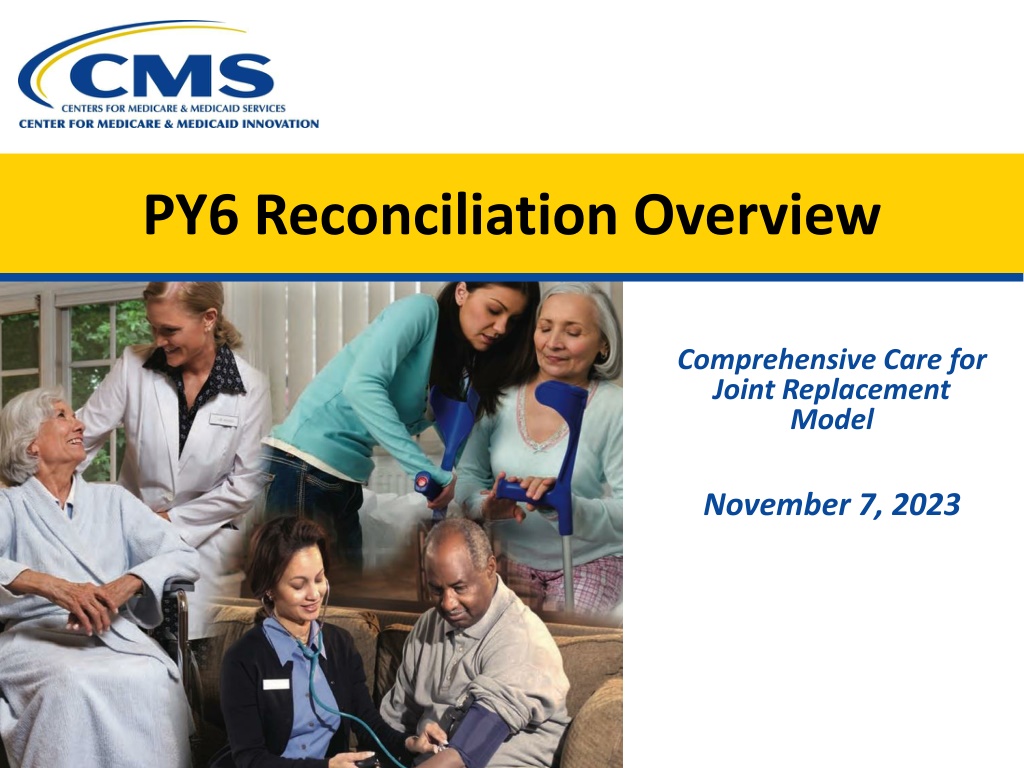
 undefined
undefined





